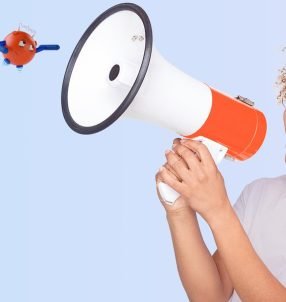
Long-time Napa resident Adelle Iverson-Payne and her daughter, Karen Wendel, can recall the days of making hundreds of candy leis.
These leis were once the popular staples of Community Projects Inc.’s Fancy Fair fundraiser. Today, they are also easy-to-make treats for the holidays from Halloween to New Years.
Iverson-Payne, who celebrated her 99th birthday on Oct. 15, is half of the duo who came up with the candy lei idea as a Fancy Fair item.
It began in the 1950s when she and the late Wanda Frommelt were asked to co-chair the Fancy Fair candy booth by the event’s founders, Pat Gasser and Elvira Ross.
Besides the usual holiday treats of fudge, English toffee, divinity and such, Iverson-Payne and Frommelt wanted to add something different and special to their booth. They found the perfect answer — the candy lei — when they visited a Marin Christmas Fair.
Iverson-Payne and Frommelt wanted their leis to have more visual pizzazz and appeal, so they came up with the idea of wrapping each candy piece in colorful cellophane and tying those pieces together with curly ribbon.
They also decided to use peppermint puff-balls. The candy was donated by Al Frommelt, Wanda’s husband, from his downtown Napa Levinson’s Drug store.
The women set out to make 50 leis that first year, and finished eight on their first day. The chains of confections were hung from a makeshift rod — a wooden broom handle suspended between two chairs set up inside a closet in Frommelt’s home.
Their elation was dashed a day or so later when Frommelt discovered the peppermints had dissolved into a sticky mess. Although disappointed, they persevered by consulting with Napa candyman Roy Partrick of Partrick’s Candies (now Anette’s) and devising a Plan B.
Following Partrick’s advice to use a hard candy, they decided to use his No.1 choice, hard butterscotch candy-balls. Partrick promptly donated those candies to the project. The women went back to work.
Several days later, disaster struck again. This time, it was ants infesting each candy. Although initially disheartened, and following a thorough cleaning of Frommelt’s closet, the women ultimately succeeded to reach their goal of making 50 candy leis.
Each lei cost six cents to make; they were sold for 50 cents each. Those inaugural candy leis quickly sold out and became instant Fancy Fair “must haves” and best sellers.
The demand for these popular leis grew exponentially, requiring hundreds of candy leis to be made annually — too great for just Iverson-Payne and Frommelt to meet alone.
Iverson-Payne recruited the rest of the “Glitter Group,” the Community Projects committee who made all the Fancy Fair candy and baked goods.
“There were about eight to 10 ‘Glitter’ members.” Iverson-Payne said. “I would invited them to my home, and we worked all day on the leis.
“We usually used Christmas colors but one girl was very artistic in using different colors to wrap and tie the candies. She always said, ‘They are a product of my muddled mind.’ They were beautiful!”
The ‘Glitter Group,’ made 300-400 leis a year, Iverson-Payne said. “We started around January—February in order to make enough leis by early December for Fancy Fair.”
Wendel added, “Back then, either because the cellophane was different or they used the round butterscotch balls instead of discs, they could wrap and twist the candies in advance. They could then store the wrapped candies in boxes until they were ready to tie them into leis.”
The candy leis always sold out. Iverson-Payne said, “Everybody liked the leis because they were colorful and inexpensive
“Also helping with those sales was that everyone in town came to Fancy Fair,” she added. “Being a small town, Fancy Fair was a source of entertainment for us.”
When Iverson-Payne arrived in Napa in 1936 with her first husband, the late Milton Iverson, Napa’s population was 7,000 residents.
“It was a great place to raise my two daughters, Greta and Karen,” Iverson-Payne said. When her children were older, in 1952 Iverson-Payne became a member of Community Projects, which had been founded during World War II.
Nine years later, she re-entered the workforce as a reading specialist at Shearer Elementary School. For the next 28 years until her retirement in 1991, Iverson-Payne received numerous accolades for her work and special Napa schools programs and projects.
She continued to maintain her ties to education, especially when she remarried in 1999 to J. Win Payne, the Napa School superintendent.
“Early on, I had to learn how-to fairly divide my time between family, work, Fancy Fair and Community Projects,” Iverson-Payne said.
Part of that successful time management was the cooperative assistance of her family. Wendel recalls how she helped to make the candy leis: “I would ask about six to 10 of may friends and Napa High classmates to help. Some of them were quite capable and picked it up very quickly. But a few of them had a difficult time because they had trouble with the tying.”
In teams of two, which helped with the tying together of the wrapped candies, it took about 20 minutes to make one lei. By the end of an afternoon, Wendel and her friends made about 150 candy leis.
To make a candy lei big enough to go over ones head, about 20-22 candies are needed with an equal number of pre-cut cellophane pieces. Using a knife, cut the cellophane into 4-inch by 5-inch rectangles. Also cut 24 12-inch long sections of flat curly ribbon prior to starting the project. After rolling the candy up in the cellophane, and tightly twisting each end to create two tails, tie together two wrapped candies at their twist points with a ribbon section. Once tied tightly and knotted, the ribbon is curled with a scissors blade. This process is repeated until the lei is a completed circle.
Although these candy leis were originally intended to be fun and flavorful fashion accessories, Iverson-Payne and Wendel have created some variation for gifts and home decorations or just to change things up.
Wendel said, “You can use different type of hard candy to suit candy preferences. I’ve used ‘jaw-teasers’ (jaw breakers) and gum-balls. Round candies are easier to work with.
“One time for a friend’s 50th birthday, we wrapped up and tied together 50-cent pieces. It was a great gift!”
They suggest adding a bit of whimsy or festiveness, coordinate the cellophane and ribbon colors with the occasion, such as orange and black for Halloween or white and gold for the New Year.
Iverson-Payne added, “Using about another dozen or so candies plus green cellophane and red ribbon, we created Christmas candy wreaths. Then we set each place at the table starting with a gold charger plate, added the other plates and then finished each setting by placing a candy wreath around the charger plate. It was gorgeous!”
These chains of confections can also be left as long ropes. These ropes can be incorporated into dry table or counter top centerpieces and/or runners.
Although originally envisioned as a Fancy Fair fundraiser about 60 years ago, the candy lei continues to be a colorful and sweet holiday season accessory.
[“source-ndtv”]
| M | T | W | T | F | S | S |
|---|---|---|---|---|---|---|
| 1 | 2 | 3 | 4 | 5 | 6 | 7 |
| 8 | 9 | 10 | 11 | 12 | 13 | 14 |
| 15 | 16 | 17 | 18 | 19 | 20 | 21 |
| 22 | 23 | 24 | 25 | 26 | 27 | 28 |
| 29 | 30 | |||||
























